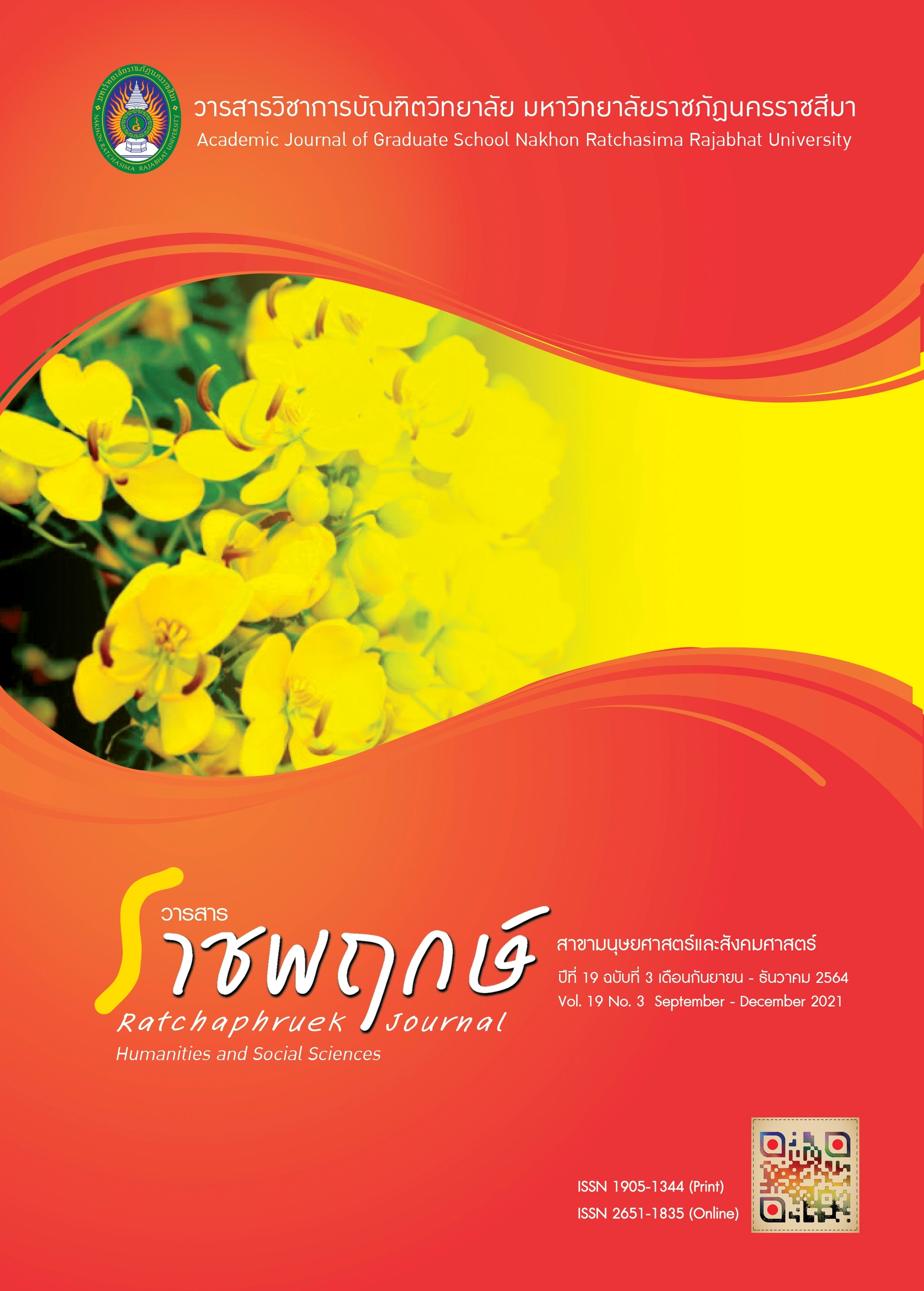Developing Instructional Model Based on STEAM Education for Enhancing Creative Thinking Skill of Students in Small Elementary Schools
Main Article Content
Abstract
The objectives of this research were: 1) To study the problems and needs for reinforcing creative thinking skill of students in small elementary schools; and 2) To develop the instructional model based on STEAM approach for enhancing creative thinking skill of students in small elementary schools. The processes of research were conducted two phases. The target group of first phase was 28 teachers in small elementary schools, Mueang District, Nakhon Ratchasima Province. The target group of second phase was five educational experts. Questionnaire and evaluation form were used for collecting data which were analyzed by mean and standard deviation. The results revealed that the elementary teachers met the problems of instruction at the high level. The needs about instruction for encouraging the creative thinking were at the high level. The instructional model based on STEAM approach was created to be four components with the syntax of this model has 7 steps were appropriately at the highest level.
Article Details
References
วารสารวิชาการอุตสาหกรรมศึกษา, 12(2), น.49-56.
ประพันธ์ศิริ สุเสารัจ. (2553). การพัฒนาการคิด (พิมพ์ครั้งที่ 4). กรุงเทพฯ: 9119 เทคนิคพริ้นติ้ง.
ฟัตมาอัสไวนี ตาเย๊ะ, ณัฐินี โมพันธุ์ และมัฮดี แวดราแม. (2560). ผลการจัดการเรียนรู้ตามแนวคิดสะตีมศึกษาที่มีต่อผลสัมฤทธิ์ทางการเรียนวิทยาศาสตร์ ความคิดสร้างสรรค์ และความพึงพอใจต่อการจัดการเรียนรู้ของนักเรียนชั้นประถมศึกษาปีที่ 5. Princess of Naradhiwas University Journal of Humanities and Social Sciences, 4(2), น.1-14.
สมใจ สืบเสาะ และพัลลภ พิริยะสุรวงศ์. (2556). การพัฒนารูปแบบการเรียนแบบสร้างสรรค์เชิงหรรษาบนเว็บเพื่อส่งเสริมความคิดสร้างสรรค์ สำหรับนักศึกษาระดับปริญญาบัณฑิต. วารสารวิทยบริการ, 24(3), 181-194.
สิราวรรณ จรัสรวีวัฒน์. (2560). “การจัดการเรียนรู้แบบบูรณาการในยุคประเทศไทย 4.0 ตามแนวคิด STEM, STEAM และ STREAM.” วารสารการศึกษาและการพัฒนาสังคม, 13(1), น. 25-27.
สำนักงานเลขาธิการสภาผู้แทนราษฎร. (2559). รายงานของคณะกรรมาธิการขับเคลื่อนการปฏิรูปประเทศด้านการศึกษา สภาขับเคลื่อนการปฏิรูปประเทศ เรื่อง “การบริหารจัดการศึกษาโรงเรียนขนาดเล็ก”. สืบค้นเมื่อ 10 มกราคม 2564, from https://www.parliament.go.th/ewtadmin/ewt/parliament
_parcy/download/ usergroup_disaster/5-10.pdf
สำนักวิชาการ. (2558). ปัญหาของโรงเรียนขนาดเล็ก. บทความวิชาการ Hot Issue. สืบค้นจาก https://library2.parliament.go.th/ebook/contentissue/2558/hi2558-106.pdf
Gettings, M. (2016). Putting It all Together: STEAM, PBL, Scientific Method, and the
Studio Habits of Mind. Art Education, 69(4), pp. 10-11.
Honey, M., Pearson, G. and Schweingruber, H. (2014). STEM Integration in K-12 Education: Status, Prospects, and an Agenda for Research. Washington, D.C.: The National Academic Press.
Householder, D. L. and Hailey, C. E. (2012). Incorporating Engineering Design Challenges into STEM
Courses. Retrieved January 10, 2021, from https://files.eric.ed.gov/fulltext/ED537386.pdf
Kang, N-H. (2019). A Review of the Effect of Integrated STEAM or STEAM (Science, Technology, Engineering, Arts, and Mathematics) Education in South Korea. Asia-Pacific Science Education, 5(6), pp. 18-19.
Kelley, T. R. and Knowles, J. G. (2016). A Conceptual Framework for Integrated STEM Education. International Journal of STEM Education, 3(1), p. 11.
Lai, E. R., Yarbro, J., DiCerbo, K. and de Geest, E. (2018). Skills for Today: What We Know about Teaching and Assessing Creativity. London: Pearson.
Massachusetts Department of Elementary and Secondary Education. (2019). Science
and Technology Engineering: Massachusetts Curriculum Framework-2016.
Retrieved January 10, 2021, from https://www.doe.mass.edu/frameworks/scitech/2016-04.pdf
National Center for Engineering and Technology Education. (2012). Infusing Engineering Concepts:
Teaching Engineering Design. Retrieved January 10, 2021, from
https://files.eric.ed.gov/fulltext/ED537384.pdf
National Research Council. (2012). A Framework for K-12 Science Education: Practices,
Crosscutting Concepts, and Core Ideas. Washington, DC: The National Academic Press.
Norris, A. (2014). Make-Her-Spaces as Hybrid Places: Designing and Resisting Self-Constructions
in Urban Classroom. Equity & Excellence in Education, 47, pp. 63-77.
Peppler, K. A. (2013). STEAM-Powered Computing Education: Using E-Textiles to Integrate the Arts
and STEM. IEEE Computer, 46, pp. 38-43.
Sahin, A. (2015). A Practice-Based Model of STEM Teaching: STEM Students on the Stage (SOS)TM.
AW Rotterdam, Netherlands: Sense Publishers.
Sternberg, R. J. (2006). “The Nature of Creativity.” Creativity Research Journal, 18(1), pp. 87-90.
Trilling, B. and Fadel, C. (2009). 21st Century Skills: Learning for Life in Our Times. San Francisco:
Jossey-Bass.
UNESCO. (2020). Educational for Sustainable Development: A Roadmap. Paris, France: UNESCO.
Vossoughi, S., Hooper, P. K. and Escudé, M. (2016). Making through the Lens of Culture and
Power: Toward Transformative Visions for Educational Equity. Harvard Educational Review,
86: pp. 206-232.


